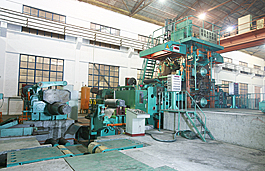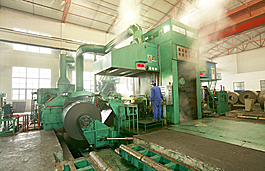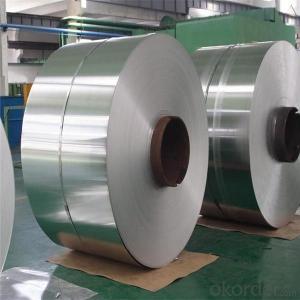Stainless Steel Coil Price Per Ton 321 Quality
- Loading Port:
- Shanghai
- Payment Terms:
- TT OR LC
- Min Order Qty:
- 4 m.t.
- Supply Capability:
- 50000 m.t./month
OKorder Service Pledge
OKorder Financial Service
You Might Also Like
Item specifice
Thickness | 0.1 mm-100mm |
Width | 1000mm, 1219mm, 1240mm, 1500mm, 1800mm, 2000mm |
Length | 2000mm-6000mmor as customer request |
Standard | ASME, ASTM, EN, BS, GB, DIN, JIS, etc |
Material | 201, 202, 301, 321, 304, 304L, 316, 316L, 309S, 310S, 410, 430, etc |
Surface | 2B, BA, 8K, No. 4 No.1 |
Mill: | TISCO, LISCO, BAO STEEL |
Packaging | Standard export sea-worthy packing |
Technique | Hot rolled / cold rolled |
Delivery time | 10-25days |
Supply ability | 700 metric tons/ month |
Payment terms | L/C, T/T |
Application range | Foodstuff, gas, metallurgy, biology, electron, chemical, petroleum, boiler, nuclear energy Medical equipment, fertilizer, etc. |
Note | We can produce other standard as the customers' requirement |




Packaging & Shipping

Our Services

- Q:How wide are stainless steel strips typically available?
- Stainless steel strips are typically available in widths ranging from 0.1 inches (2.5mm) to 24 inches (610mm) depending on the specific requirements and applications.
- Q:Can stainless steel strips be used in architectural railing systems?
- Yes, stainless steel strips can be used in architectural railing systems. Stainless steel is a popular material choice for architectural applications due to its durability, corrosion resistance, and aesthetic appeal. Stainless steel strips can be formed into various shapes and sizes to meet the design requirements of the railing system. Additionally, stainless steel is low maintenance and can withstand harsh environmental conditions, making it an ideal material for outdoor applications. Overall, stainless steel strips provide a strong and visually pleasing option for architectural railing systems.
- Q:What is the difference between cold rolled and hot rolled stainless steel strips?
- The main difference between cold rolled and hot rolled stainless steel strips lies in the manufacturing process. Cold rolled stainless steel strips are produced by passing the steel through a series of rollers at a room temperature, resulting in a smoother and more precise finish. On the other hand, hot rolled stainless steel strips are produced at high temperatures, which makes them less precise and leaves a rougher surface. Additionally, cold rolled strips tend to have tighter tolerances and improved mechanical properties compared to hot rolled strips.
- Q:Are 111 stainless steel strips suitable for harsh chemical environments?
- No, 111 stainless steel strips are not suitable for harsh chemical environments. 111 stainless steel is a low alloy grade that does not have the same corrosion resistance as other stainless steel grades, such as 304 or 316. It is more susceptible to corrosion and damage when exposed to harsh chemicals, especially acids and chlorides. In harsh chemical environments, it is recommended to use stainless steel strips with higher alloy content and corrosion resistance to ensure durability and longevity.
- Q:Can stainless steel strips be used in the production of cutlery?
- Yes, stainless steel strips can be used in the production of cutlery. Stainless steel is a popular choice for cutlery due to its durability, resistance to corrosion, and easy maintenance. Stainless steel strips can be shaped and formed into the desired cutlery shapes, providing a sturdy and long-lasting product.
- Q:What are the common uses of stainless steel strips in the pharmaceutical industry?
- Due to their unique properties, stainless steel strips find extensive use in the pharmaceutical industry. They are suitable for a variety of applications, and some common uses include: 1. Packaging: Stainless steel strips provide a safe and hygienic barrier, protecting pharmaceutical products like tablets, capsules, and powders from external contaminants, moisture, and light. 2. Sterilization containers: Stainless steel strips are vital in fabricating sterilization containers, which are essential for the sterilization process in pharmaceutical manufacturing. These containers effectively sterilize and maintain medical instruments, equipment, and supplies in a sterile condition. 3. Mixing and blending equipment: Stainless steel strips are used to construct mixing and blending equipment, such as containers, tanks, and vessels. These equipment ensure efficient and consistent mixing of ingredients in pharmaceutical formulations. 4. Conveyor systems: Stainless steel strips are commonly employed in constructing conveyor systems, extensively used in pharmaceutical manufacturing for transporting raw materials, intermediate products, and finished goods. The corrosion-resistant nature of stainless steel guarantees cleanliness and purity during the manufacturing process. 5. Cleanroom applications: Stainless steel strips are utilized in cleanrooms, critical to maintaining a controlled environment free from contaminants. They are used to fabricate cleanroom furniture, equipment, and fixtures, ensuring a hygienic and durable solution that withstands frequent cleaning and disinfection. 6. Equipment and machinery components: Stainless steel strips are employed in manufacturing various components for pharmaceutical equipment and machinery, such as pumps, valves, fittings, and connectors. The high strength, corrosion resistance, and ease of fabrication of stainless steel make it a preferred material in these applications. In summary, stainless steel strips are vital in the pharmaceutical industry due to their corrosion resistance, durability, cleanliness, and ease of maintenance. These properties make stainless steel strips an ideal choice for various applications, ensuring the safety, quality, and efficacy of pharmaceutical products.
- Q:What are the recommended cleaning agents for 111 stainless steel strips?
- The recommended cleaning agents for 111 stainless steel strips include mild soaps, non-abrasive cleaners, and specialized stainless steel cleaners. It is important to avoid using harsh chemicals, abrasive scrubbers, and chlorine-based cleaners as they may damage the stainless steel surface.
- Q:Can stainless steel strips be used for medical implants?
- Yes, stainless steel strips can be used for medical implants. Stainless steel is a commonly used material in medical implants due to its high strength, corrosion resistance, and biocompatibility. It is used in various medical devices and implants, including orthopedic implants, dental implants, and surgical instruments.
- Q:Can stainless steel strips be electroplated?
- Yes, stainless steel strips can be electroplated. Electroplating is a process in which a thin layer of metal is deposited on the surface of an object using an electric current. While stainless steel is already corrosion-resistant, electroplating can enhance its appearance, provide additional protection against wear and tear, and improve its conductivity. The process involves immersing the stainless steel strip in a bath containing a solution of metal ions and applying an electric current, causing the metal ions to be attracted and deposited onto the surface of the strip. This can be done with various metals, such as gold, silver, nickel, or chromium, to achieve different aesthetic or functional properties.
- Q:What is the composition of 111 stainless steel strips?
- The specific alloy used to manufacture these 111 stainless steel strips is typically known as the composition. Stainless steel, an iron-based alloy, is composed of at least 10.5% chromium along with other elements such as nickel, molybdenum, manganese, and carbon. The composition of these 111 stainless steel strips may vary depending on the grade or specification. For instance, a commonly used grade is 304 stainless steel, which typically contains 18% chromium and 8% nickel. Another frequently utilized grade is 316 stainless steel, which consists of 16-18% chromium, 10-14% nickel, and 2-3% molybdenum. To ascertain the exact composition of these 111 stainless steel strips, it is necessary to refer to the manufacturer or supplier's specific grade or specification.
1. Manufacturer Overview |
|
|---|---|
| Location | |
| Year Established | |
| Annual Output Value | |
| Main Markets | |
| Company Certifications | |
2. Manufacturer Certificates |
|
|---|---|
| a) Certification Name | |
| Range | |
| Reference | |
| Validity Period | |
3. Manufacturer Capability |
|
|---|---|
| a)Trade Capacity | |
| Nearest Port | |
| Export Percentage | |
| No.of Employees in Trade Department | |
| Language Spoken: | |
| b)Factory Information | |
| Factory Size: | |
| No. of Production Lines | |
| Contract Manufacturing | |
| Product Price Range | |
Send your message to us
Stainless Steel Coil Price Per Ton 321 Quality
- Loading Port:
- Shanghai
- Payment Terms:
- TT OR LC
- Min Order Qty:
- 4 m.t.
- Supply Capability:
- 50000 m.t./month
OKorder Service Pledge
OKorder Financial Service
Similar products
New products
Hot products
Hot Searches
Related keywords



























